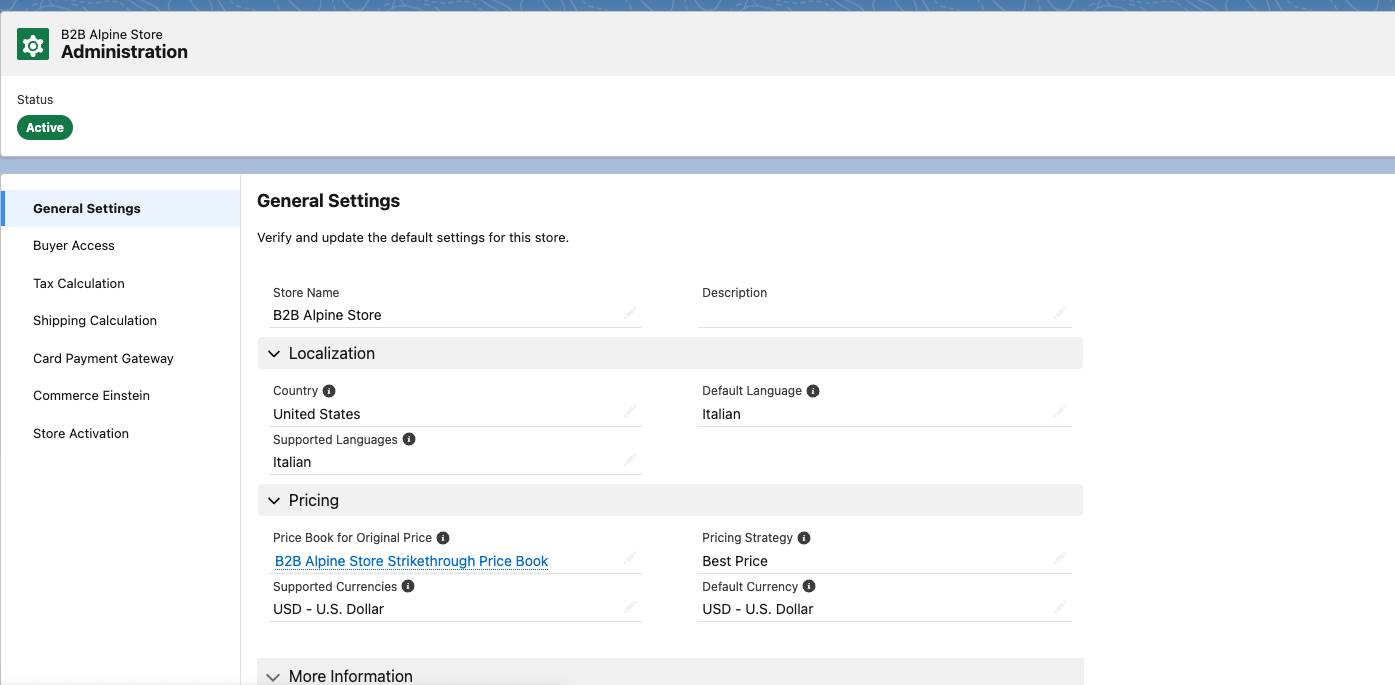Get to Know Commerce Markets, Customers, and Products
Learning Objectives
After completing this unit, you’ll be able to:
- List some differences between B2B and D2C commerce markets.
- Describe key concepts of the B2B and D2C Commerce data model.
- List some standard objects included with B2B and D2C Commerce.
- Explain how shopper registration works in the ecommerce world.
B2B Versus D2C
The world of online commerce is expanding to include business-to-business (B2B) in addition to business-to-customer (D2C). Until now, B2B has been a world far removed from the ecommerce experiences most folks are used to. But B2B customers now want the same easy access and payment they experience when shopping online.
D2C commerce and B2B commerce are inherently different. D2C commerce involves providing an incredible shopping experience, with easy product access and fast checkout. B2B commerce involves a multitude of complex relationships and the movement of bulk goods. Purchases often require negotiated, account-specific pricing and terms, and are often done on behalf of someone else. D2C commerce prices come from targeted price books with discounts via promotions.
This is a condensed summary of the commerce market. Take a look at the Explore Commerce Strategies trail for strategy details.
What Is D2C Commerce?
Some traditional B2B companies have expanded their business model to sell not only to other businesses but also directly to consumers. We introduced the D2C Commerce product to meet the needs of companies taking this new approach.
With the combination of B2B Commerce and D2C Commerce, you can easily manage the complexity of both types of interactions. And it all starts with the B2B and D2C data model. In this module you see how the various objects of each product fit together and give you the flexibility that you need for your business.
Here are the general differences between the two products.
Element |
Difference |
|---|---|
Shoppers |
D2C customers are called shoppers, and prices for shoppers can vary by promotions or price books. B2B customers are called buyers, with negotiated prices. To avoid confusion, when we refer to both D2C and B2B, we call them customers. |
Guest checkout |
For D2C commerce, both authenticated and unauthenticated shoppers can check out. Guest checkout and self-registration is common. Anonymous checkout is much less common in the B2B commerce world, where price contracts are the norm. |
Buyer group |
D2C Commerce, which is for both types of customers, uses one buyer group so that all customers have access to the same products. B2B Commerce supports multiple buyer groups. |
International |
Both products support multiple countries. |
Store defaults |
D2C Commerce uses store defaults for catalog, entitlement policy, and buyer group. Here’s what’s associated with a B2B Commerce store by default: a store experience, default and supported languages, and default and supported currencies. |
Price books |
D2C Commerce uses a price book that’s assigned to the store. B2B Commerce uses a price book that’s assigned to a buyer group with an optional default store price book. |
Say Hello to Ursa Major Solar
Ursa Major Solar, Inc., is a Southwest-based supplier of solar components and systems that sells its products to retailers, contractors, and resellers via commerce stores. It’s gone from a local player to a regional one, and recently opened a sales and distribution center in Italy. Competitively priced solar components are its bread and butter, but turnkey solar solutions are the fastest growing (and most profitable) part of its business.
Commerce lets Ursa Major Solar organize its wares and personalize pricing for different retail buyers for B2B and D2C customers. It’s also started to sell directly to consumers online, so it’s using both the B2B Commerce and the D2C Commerce products.
Registration Data
Ursa Major Solar wants to keep close tabs on all its customers, using customer registration data from both Commerce products. In the world of online commerce, this data gives the company a lot more insight into who its customers are and what they need.
However, many D2C shoppers pick and choose which merchants they want to register with. Once they register, they’re hit with a barrage of unwanted emails—from each merchant.
Taylor Givens (they/them), senior merchandiser for Ursa Major Solar, says it this way: “We’re all shoppers. Some of us are known to a merchant and some aren’t. Shoppers who actively register get faster checkout, special discounts, and product previews. Unregistered guests get anonymity.”

Anonymity is governed by law in many locations. Salesforce includes extensive settings for managing privacy and General Data Protection Regulation (GDPR) compliance.
Although you can configure checkout for B2B guest customers, B2B buyers are usually registered customers. Companies like Ursa Major Solar have a working relationship with each of their B2B commerce buyers, who are register to buy products and agree by contract on specific prices.
The Salesforce Data Structure
So what’s a data model, and why is it important? A data model is a way to understand what database tables—the structure of data—look like. Think of a database table as a spreadsheet. Here’s what some data from an org with B2B and D2C Commerce could look like in a tabular format.
Store Name |
Description |
Default Language |
Supported Languages |
Default Currency |
Supported Currencies |
|---|---|---|---|---|---|
Ursa Major Solar B2B - Italia |
Italian B2B store |
Italian |
Italian; English |
Euro |
Euro; Dollar |
Ursa Major Solar B2B - USA |
USA B2B Store |
English |
English |
Dollar |
Dollar |
Ursa Major Solar D2C - USA |
USA D2C Store |
English |
English |
Dollar |
Dollar |
In Salesforce, the entire database table is an object, such as the Store object here. Each column is a field. Each row is a specific record, for example, Ursa Major Solar - Italia.
Of course, tables of information aren’t represented as such in the Salesforce app. What you see instead are things like record pages, which show you information in the page fields. Also, D2C and B2B data exist in separate tables.

Next Steps
In this unit, you learned about the B2B and D2C markets and customers, and how B2B and D2C Commerce data is structured. Next, learn how the Store object is central to everything commerce-related for Ursa Major Solar.
Resources
- Trailhead: Explore Commerce Strategies
- Trailhead: Sell Everywhere with Commerce Cloud
- Trailhead: Salesforce D2C Commerce Basics
- Salesforce Help: Salesforce B2B Commerce and D2C Commerce